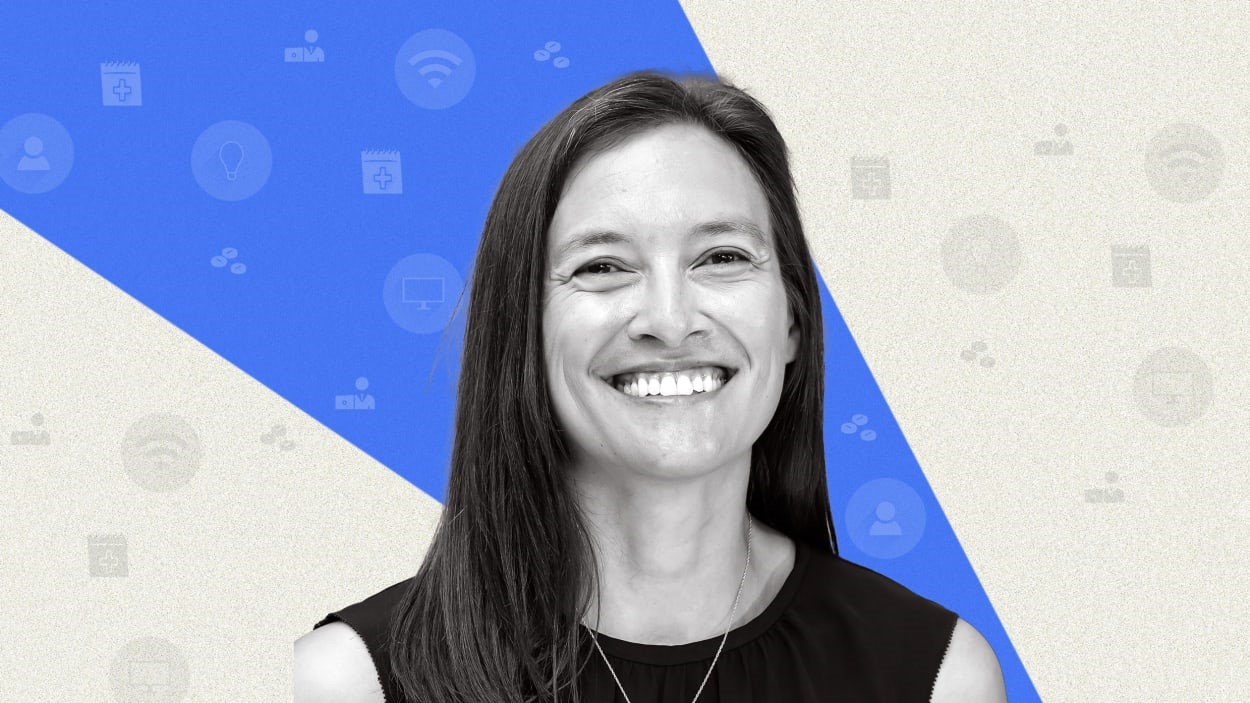Mina Hsiang helped save Healthcare.gov a decade ago. Today she’s rewriting the government tech playbook
By Wilfred Chan
In October 2013, Mina Hsiang, then an analytics executive for a healthcare startup, arrived in Washington, D.C., for an unusually high-stakes assignment. President Barack Obama’s signature initiative, Healthcare.gov, had imploded spectacularly upon its launch, preventing tens of millions of people from signing up for newly required health plans. Its continued technical outage had put the entire Affordable Care Act—not to mention Obama’s political legacy—in jeopardy. And it was up to Hsiang and a scrappy “surge team” of private sector experts to save it.
Healthcare.gov, the team quickly found, had been built disjointedly, thanks to calcified bureaucratic processes that gave government’s tech contractors little incentive to work together. It took the team about two months to undo the mess—and their work changed Washington’s IT playbook forever. In the aftermath, the surge team formalized into a new division within the executive office: Called the the United States Digital Service, this offshoot is responsible for revamping the government’s tech operations and preventing another Healthcare.gov-style flop from ever happening again.
In 2021 Hsiang was named the USDS’s third administrator—just as Biden’s American Rescue Plan funneled $200 million in new funding to the agency, nearly tripling its size. Now, at the ten-year anniversary of the Healthcare.gov’s debacle, the agency chief speaks to Fast Company about how its lessons still inform the government’s tech strategy—and why tech workers are needed in Washington more than ever. The interview has been edited for length and clarity.
FC: Let’s go back a decade. You were doing analytics for a private healthcare company. How did you get pulled into the effort to save Healthcare.gov?
MH: I got a call and was brought in initially to lead a whole bunch of product management work, which started with, like, “Oh, can you just distill down what key metrics we need to be monitoring?” But that quickly led upstream to a role figuring out, what did the actual application actually do? How are we prioritizing work? How do the different contractors work together? It was a really intense time, working 14-hour days, seven days a week. It’s actually around the time I met my husband, and it was a good indication that he was okay with a sort of very aggressive work lifestyle.
One of the first things that we did was implement monitoring. There wasn’t a way to look at how users were in the funnel and what their behavior looked like. So we printed out every screen of what the user sees, to articulate where monitoring should go. My desk was a folding table in the hallway, and we hung out the entire user flow on the wall. Immediately, people from every team started coming by and being like, “where did you get that? That’s really helpful.” And we were like, “we went on the website and we printed it.”
FC: Can you sum up in a sentence why Healthcare.gov failed at launch?
MH: A lack of realistic and coordinated focus on user outcomes, and a lack of a coordinated and iterative process.
I’m an engineer, and there’s lots of jokes about, “Okay, we’ll build this part, this part, and this part, put it all together at the end, and it’ll totally work right.” Anyone who’s built complicated systems knows that that’s not in fact how things play out. You need to constantly be integrating them and testing it. In The Checklist Manifesto, Atul Gawande talks about building a skyscraper and how your schedule is always changing. And you need to be coordinating amongst many, many contractors and players.
FC: Did you witness any kind of culture clash between the Silicon Valley way of doing things fast and collaboratively, versus the government’s old-school, procurement-laden style?
MH: There was definitely a clash. But it’s not like we were butting heads and really angry at each other. Everybody has pretty reasonable perspectives, but the rules around how federal contracts work are commonly interpreted in a way that is very antithetical to iterative and rapid execution. So it was much more like, “I’m not allowed to do that. I 100% agree with you, but you need to get this chain of people to sign off on doing that in order for me to be allowed.” We helped everyone get organized, creating space so that people could actually discuss and tackle the issues.
FC: Fast forward ten years, and you’re leading USDS. How much of the spirit from Healthcare.gov’s ad hoc surge team remains?
MH: I think we’re extremely consistent with the ethos. I think the big difference is, we have said, “OK, in order to mitigate those huge impacts to policy and execution, we need to start engaging in these conversations much earlier.” So we have moved upstream, and we coordinate much more closely up and down the chain.
FC: So less of a firefighting role, and more of—
MH: Fire prevention. And bringing this operating model to the mainstream. I was just having a conversation this morning with the Department of Homeland Security’s chief information officer, who is a former USDSer, former Silicon Valley engineer, and product manager. There’s no longer this sort of conflict where they want to run things in a very top-down and siloed way.
FC: Are there USDS folks basically at every agency now? Do you get involved whenever an agency wants to do something digital?
MH: I wish! We have dramatically more demand from agencies than we can fulfill. Tell your readers that there are tremendous opportunities to be on the ground in that context. We are in the grand scheme of technology and the federal government, a tiny team of 215 to 220 people. So we deploy in small teams across agencies on incredibly high priority and high-end projects, that impact millions of folks. Right now we’re working on about 20 projects, and we would love to be working on more.
FC: USDS has grown—but you also see some lawmakers saying, “Hey, we should claw back some of USDS’s budget, what do they even do?” And it seems like the Trump administration wasn’t the biggest supporter of it either. How does USDS justify itself?
MH: I spent most of my career in early-stage companies, where it’s all about your track record. For USDS, it’s about being able to demonstrate: We have helped Veterans Affairs increase their trust scores across the board by 20%. We have helped the Department of Homeland Security rebound their operations. We are helping the Centers for Medicare and Medicaid services mitigate the impact of an array of sort of operational burden driven challenges around Medicaid disenrollments. We are supporting Federal Student Aid to launch the new Free Application for Federal Student Aid this year, which is going to be a critical tool for the 30 million Americans who have student loans.
FC: COVID-19 has been a big test as well — how would you evaluate your accomplishments there?
MH: Prior to Covid.gov, we launched Vaccines.gov, which had 180 million visitors in the first six months, so clearly filling a public need. At the same time, we launched its text-message capability, which allowed you to just enter your zip code to find vaccines or ask questions. And I think that has opened the door for different types of interactions. Social Security is now moving to a world where you can submit documents electronically via a picture on your phone. It’s really accelerated these remote access capabilities that we all know and love and expect from other entities out in the private sector.
FC: Speaking of new capabilities, I’ve noticed multiple approaches across federal agencies to facial recognition. There’s been controversy over TSA’s biometric capture, as well as Customs and Border Protection’s app that asylum seekers use to register at the border, and whether those algorithms may be biased against darker-skinned people. The General Services Administration recently declined to implement facial recognition on Login.gov. So where do you come down on that? Does the USDS set standards around how the federal government approaches capabilities like these?
MH: Our role is to bring in expertise to help agencies understand how different operating models, programs, and systems work, and to support them in weighing the key questions in front of them. Each of these agencies is governed, frankly, by different regulations and laws, with different key stakeholders that they’re looking to satisfy. So we provide insight, but we’re not going to be the standard setters. We aren’t in the policymaking business.
FC: I imagine you might have a similar answer with regard to AI.
MH: Yeah. I mean, we are recruiting for folks who have experience in implementing AI systems. We want to be careful and, as I said, are not setting policy on this, but bringing expertise to the table.
For example, we have a team that’s working on a website at the Department of Health & Human Services called Grants.gov, which is the website where you can search for federal grants of all types, whether it’s research or to build a bridge. Forty billion goes out through grants on that site. And our team knows that sometime in the next X years, potentially the majority of incoming applications for grants are going to be written by artificial intelligence systems. So coping with that is going to be a necessity.
FC: We’ve talked a lot about bringing people in—so what’s your pitch to folks who are curious about USDS and wondering if this is worth dropping their private sector job for?
MH: I and a huge number of my colleagues and friends went into engineering to fix problems. To do things that have meaning and solve problems for the world. And there is no other place that I have worked that allows me to take that skill set and fix more problems for the public than the government. It’s just an incredible opportunity to make our country function better and to bring trust. You can see the impact for regular people every single day, and it beats optimizing ads.
FC: So if folks come to work for you now, can they still wear hoodies if they so choose?
MH: Yeah. People can still wear hoodies. I still wear jeans in the West Wing.
(8)



